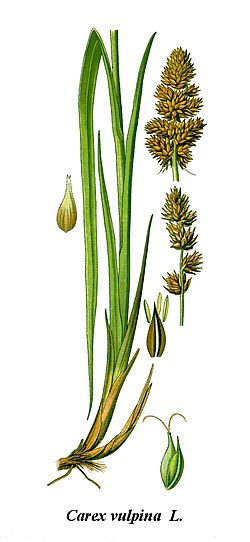| Carex vulpina | |
|---|---|
 | |
| Botanical illustration | |
 | |
| At the Botanical Garden Munich-Nymphenburg | |
| Scientific classification | |
| Kingdom: | Plantae |
| Clade: | Tracheophytes |
| Clade: | Angiosperms |
| Clade: | Monocots |
| Clade: | Commelinids |
| Order: | Poales |
| Family: | Cyperaceae |
| Genus: | Carex |
| Species: | C. vulpina |
| Binomial name | |
| Carex vulpina | |
| Synonyms [2] | |
List
| |
Carex vulpina, the true fox sedge, is a species in the genus Carex , native to Europe and western Asia. [2]
